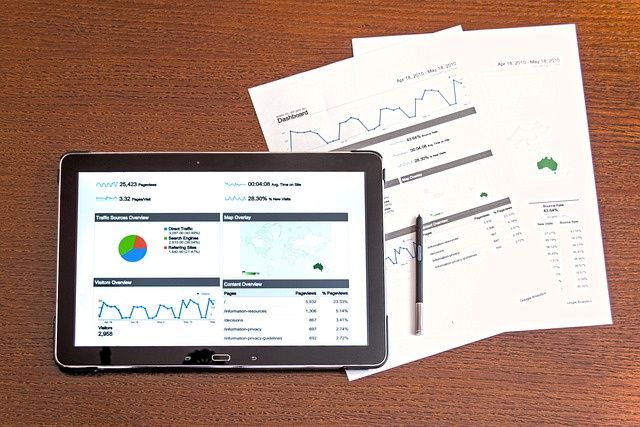Artificial Intelligence (AI) is dramatically transforming agriculture, particularly through real-time soil moisture monitoring. AI-powered sensors replace manual methods, providing dynamic data for informed decision-making. Integrated with machine learning algorithms, these sensors generate internal audit planning dashboards that predict moisture issues and optimize watering schedules. By analyzing historical data and environmental factors, AI enhances sustainability, reduces water wastage, and improves efficiency. These dashboards empower farmers and land managers with precise insights, simplifying complex patterns and facilitating adjustments to irrigation and crop yield predictions. Challenges include ensuring data accuracy and consistent sampling intervals, but AI-driven dashboards are revolutionizing internal audit processes in agriculture.
AI is transforming agriculture, and at the forefront of this revolution is real-time soil moisture monitoring. This innovative application leverages AI algorithms to analyze sensor data, providing farmers with precise insights into their crops’ water needs. By understanding soil moisture levels instantaneously, farmers can optimize irrigation schedules, enhance yield potential, and reduce water wastage. This article explores the benefits and challenges of real-time data, offers solutions for efficient dashboard creation using AI, and highlights its role in effective internal audit planning.
- AI in Agriculture: Revolutionizing Soil Moisture Monitoring
- Real-Time Data: Benefits and Challenges
- Creating Efficient Dashboards for Internal Audits
AI in Agriculture: Revolutionizing Soil Moisture Monitoring

Artificial Intelligence (AI) is transforming various industries, and agriculture is no exception. In particular, AI is revolutionizing soil moisture monitoring, offering farmers a powerful tool to optimize their crop yields and water usage. Traditional methods often rely on manual sampling and lab analysis, which can be time-consuming and inefficient. However, with AI-powered real-time soil moisture sensors, farmers can access dynamic data that provides insights into their fields’ exact hydration levels.
These advanced sensors, integrated with machine learning algorithms, create internal audit planning dashboards that visualize moisture patterns and predict potential issues. By analyzing historical data and environmental factors, AI algorithms can identify optimal watering schedules, reducing water wastage and fostering sustainable agricultural practices. This technology allows farmers to make informed decisions, ensuring their crops receive the right amount of moisture at the right time, ultimately enhancing overall efficiency and productivity.
Real-Time Data: Benefits and Challenges

Real-time data offers a wealth of advantages in AI-driven soil moisture monitoring, enabling precise and immediate insights into agricultural health. This dynamic information can facilitate informed decision-making by farmers and land managers, who can adjust irrigation schedules, predict crop yields, and mitigate potential issues promptly. With AI internal audit planning dashboards, users gain visual representations of data, making complex patterns more accessible and actionable.
However, challenges accompany this technological advancement. Data accuracy and consistent sampling intervals are critical; any discrepancies or gaps could lead to incorrect interpretations. Ensuring reliable and continuous data collection across vast agricultural areas is a logistical task, requiring robust infrastructure and the integration of diverse sensors. Moreover, interpreting real-time data requires sophisticated algorithms and domain expertise to avoid false positives and negatives, ensuring that decisions made based on these insights are both efficient and effective.
Creating Efficient Dashboards for Internal Audits

Efficient AI-powered dashboards are transforming internal audit processes by providing real-time insights into critical business areas, including soil moisture monitoring in agricultural settings. These dynamic tools aggregate and visualize data from various sources, such as sensors embedded in fields, weather stations, and historical records. By consolidating this information into intuitive interfaces, auditors can quickly identify anomalies, trends, and potential risks associated with crop health and yield predictions.
Customizable dashboards for internal audits enable stakeholders to set specific parameters, trigger alerts upon deviations, and gain deeper insights into operational efficiency. This proactive approach enhances audit effectiveness by facilitating data-driven decisions. Moreover, these dashboards facilitate collaboration among teams, ensuring everyone works off the same information and understanding, which is crucial in complex agricultural operations where moisture levels can significantly impact crop management strategies.
AI is transforming agriculture by enhancing soil moisture monitoring through real-time data collection. This technology offers numerous benefits, such as improved water management and increased crop yields, but also presents challenges like ensuring data accuracy and privacy. Efficient dashboards, integrated with AI, can streamline internal audit planning, providing valuable insights for farmers to make data-driven decisions. By leveraging these tools, agriculture can move towards a more sustainable and productive future.
